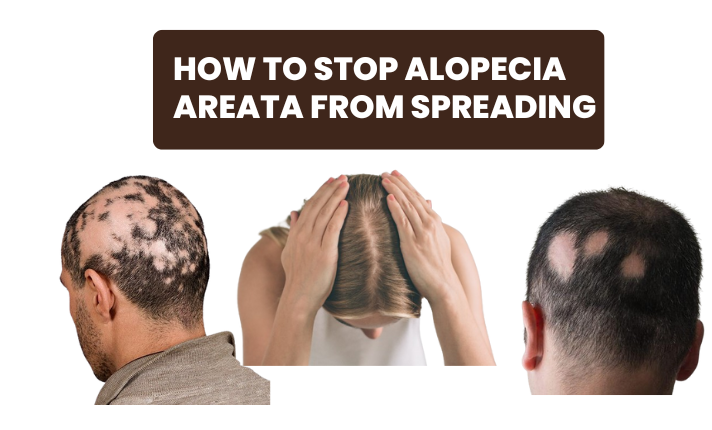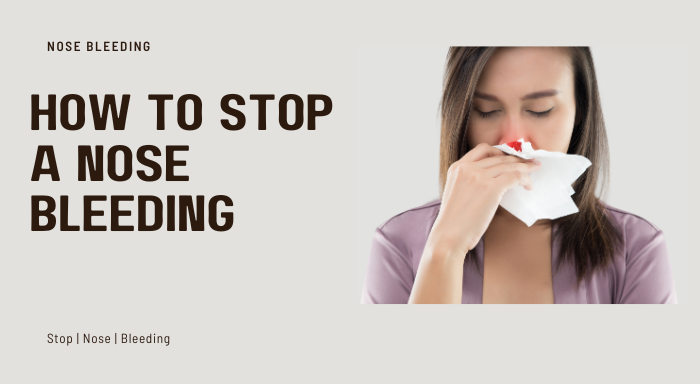How To Stop Alopecia Areata From Spreading

Alopecia areata is a hair loss condition that affects many people in the UK and around the world. It can cause patchy bald spots on the scalp or, in some cases, total loss of scalp and body hair. There are several types of alopecia areata, including alopecia totalis (total loss of all scalp hair) and alopec ia universalis (total loss of all scalp and body hair). While the causes of alopecia areata are not yet known, there are the ways below how To Stop Alopecia Areata From Spreading.
Will My Alopecia Areata Spread to Other Areas?
It is important to understand that alopecia areata can affect people in different ways. In some cases, the alopecia areata may spread to other areas of the body. Studies have shown that roughly half of all patients with alopecia areata experience some form of recurrence within 2 years after treatment , with around 30% of patients experiencing recurrence within a year. Symptoms of alopecia areata can sometimes start in childhood or be triggered by hayfever, allergies, and even a family history of alopecia areata.
Alopecia areata is an autoimmune condition caused by the body’s white blood cells attacking hair follicles. This leads to the follicles losing their ability to grow hair, resulting in bald patches and total hair loss. Unfortunately, there is no definitive cure for alopecia areata, but there are treatments that can help to stop it from spreading. These treatments include topical corticosteroids, immunotherapy, minoxidil and light therapy.
Six Ways to Stop Alopecia Areata from Spreading
There are various lifestyle changes and medications you can take to reduce the chances of alopecia areata spreading. Quitting smoking is especially important for smokers as there is an increased risk of progressive alopecia areata in these individuals. Reducing stress levels through exercise and relaxation techniques can also help prevent alopecia from spreading.
Another important factor in preventing the spread of alopecia areata is ensuring your vitamin levels are adequate. Vitamin deficiencies can lead to hair loss and so it is important to ensure you have enough of the key vitamins which include A, D, zinc, iron, folate and vitamin E. If you are worried that there may be a vitamin deficiency due to alopecia areata, speak to your doctor or trichologist who can chart the percentage of micronutrient deficiency.
People with alopecia areata may be prescribed corticosteroids which come in the form of topical steroid creams. These creams help reduce inflammation caused by immune cells attacking hair follicles and can also help slow down hair loss. Min oxidil is also used to treat alopecia areata, as it works by widening blood vessels and allowing nutrients to reach hair follicles which can help promote hair growth. It comes in the form of a topical Minoxidil solution which should be applied directly to affected areas for best results.
In more severe cases, other treatments such as topical immunotherapy or contact immunotherapy can be used. These treatments involve applying an allergen or contact sensitiser to the affected areas, which can stimulate a mild allergic reaction and cause contact dermatitis. This response can help stimulate hair regrowth in the alopecia areata patches. The basis of this treatment is to trigger a white blood cell attack on the affected follicles, thus reducing the body’s autoimmune response . Response rates to this type of topical immunotherapy vary, and can be between 20-40%.
Treatment option is JAK inhibitors which were approved by the UK Medicines and Healthcare products Regulatory Agency in 2020 as a treatment for alopecia areata. The US Food and Drug Administration also approved Olumiant, a JAK inhibitor, for the treatment of alopecia areata in 2023. JAK inhibitors work by inhibiting the activity of JAK enzymes which are responsible for sending out certain immune response signals to the body. By blocking these signals, it prevents the body from sending out signals to attack hair follicles, thus reducing the autoimmune response and reducing hair loss.
Can a Hair Transplant Stop Alopecia Areata From Spreading?
A hair transplant is a procedure in which hair follicles are moved from one area of the head to another. This can be a beneficial solution for people suffering from alopecia areata, as it allows the transplanted hair follicles to take over the role of those affected by alop ecia. This means that the transplanted hair can help reduce the spread of alopecia areata, as it lessens the autoimmune response in which the body attacks its own hair follicles
How long does an Episode of Alopecia Areata last?
The length of an episode of alopecia areata can vary from one patient to another. In a study, 30% of patients with patchy alopecia areata showed improvements in their condition within six to twelve months, while 9% had complete regrowth within two years. Two-thirds of those studied also had full regrowth after five years. A separate study found that the average duration of a current episode of alopecia areata for 50 patients was 1-3 months for 16%, 3-6 months for 13%, 6-12 months for 13%, 12-24 months for 15%, and 24-48 months for 25%. It’s less common, but some single episodes of alopecia areata can last longer than two years.
What Causes Alopecia to Flare Up?
There are many potential triggers that can cause an alopecia flare-up, and it’s important to understand what might be causing yours. Climate has been known to play a role in alopecia areata flare-ups, with some people reporting that their symptoms worsen during the autumn and winter months due to a lack of sun exposure and reduced vitamin D intake. Stress is also known to be a trigger, with emotional and physical stress both being linked to episodes of alopecia areata.12 Lack of certain nutrients can also cause flare-ups, with some studies suggesting that vitamin deficiencies may be linked to alopecia areata flare-ups during periods of poor nutrition.13
How to Stop Alopecia Areata from Spreading Naturally
Remedies such as hair loss treatments can be used to help stop alopecia areata from spreading. However, the condition is known to have high rates of spontaneous remission, meaning it might go away without any intervention. As an option, those suffering from alopecia areata may choose to seek out treatments for the condition, or allow it to regrow naturally.
Some of the treatments available for alopecia areata include reducing stress levels, quitting smoking, and eating a balanced and healthy hair diet. These remedies can help to promote spontaneous hair regrowth, as well as reduce the risk of further episodes of alopecia areata. Before deciding which course of action to take, it’s important to weigh up the pros and cons of both allowing alopecia areata to regrow naturally, or undertaking active treatment.
What is the Fastest Way to Cure Alopecia?
The fastest way to cure alopecia areata is by learning ways to effectively manage the condition. This can include a fast reduction of symptoms, and it’s likely that a rapid diagnosis and immediate treatment will be recommended for optimum results. Visiting a trichologist who can accurately diagnose bald patches on your scalp is a good choice, and the Wimpole Clinic has hair loss specialists that are equipped to find the right treatment for alopecia areata in order to stop it from spreading. We provide female hair loss treatments as well as male hair loss treatments tailored to your specific needs. Book a consultation today and learn how to stop alopecia areata from spreading.






